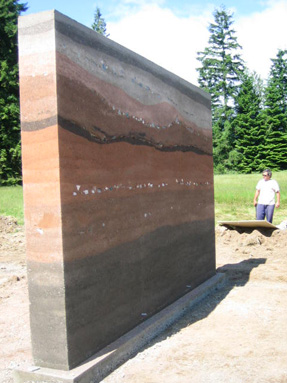Texture deals with how smooth or rough a surface is. When talking about elements of structures, smooth surfaces can often seem more modern and contemporary, while rough surfaces seem more rustic. Think of the difference between a rammed earth or concrete wall (favorites in modern design) versus a stone or splitface block wall.

Texture has an additional role in landscape design, however. A pleasing planting design includes plants of different textures used in the landscape. Soft and spiky, narrow and broad, whatever the mix you choose the idea is to create some contrast to keep things interesting. This photo shows a really basic pairing of soft and spiky – something that’s actually quite common in container plantings:
An old trick I learned a long time ago was that if you want to be able to evaluate whether you have successfully blended textures in your planting design, take a black and white photo of the plantings. With the color removed, the textures become obvious. Brilliant. You don’t even need Photoshop anymore, just a vintage camera app for your phone. How cool is that? Yay, technology!
Texture is really effective, and it’s one of those tools that, when used properly, isn’t even readily apparent. It just “looks right.” The key to achieving interesting textures and relationships is knowing your options – which is where a good landscape designer can be a great asset.



Leave a Reply